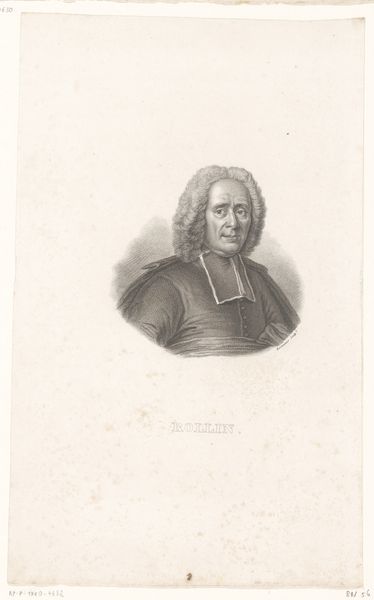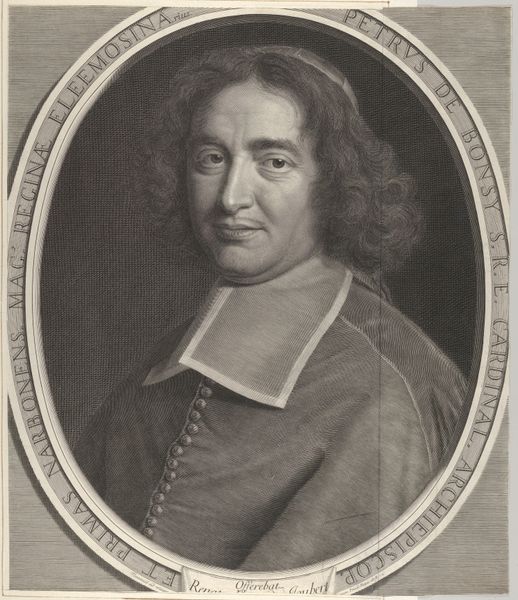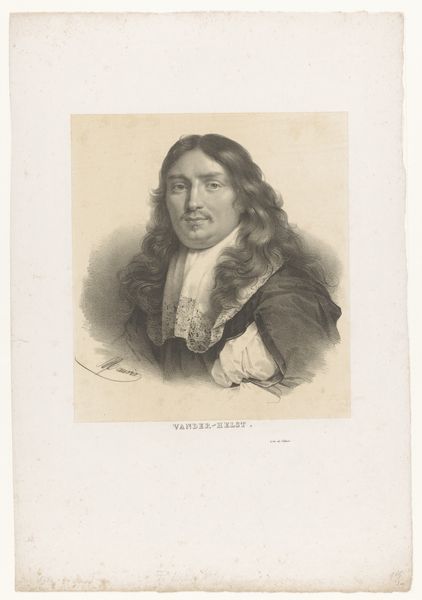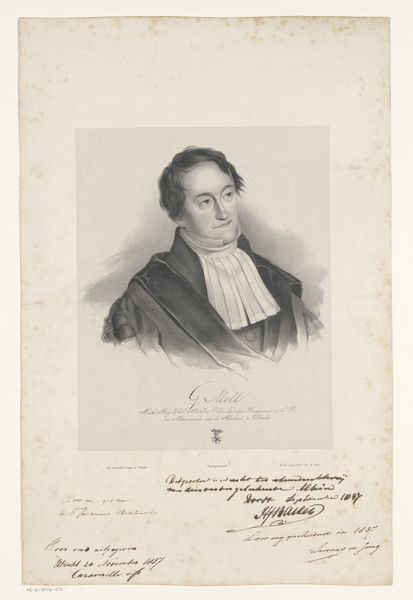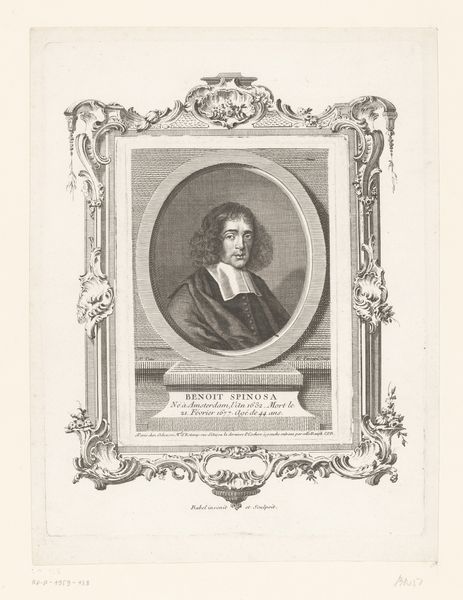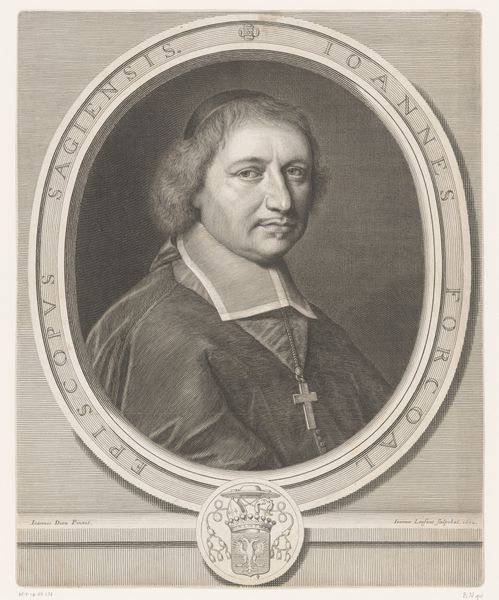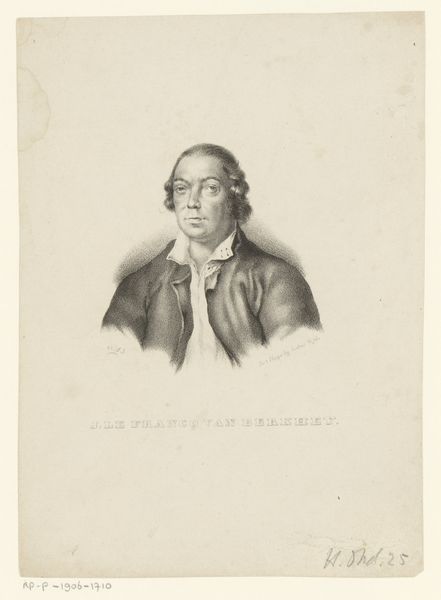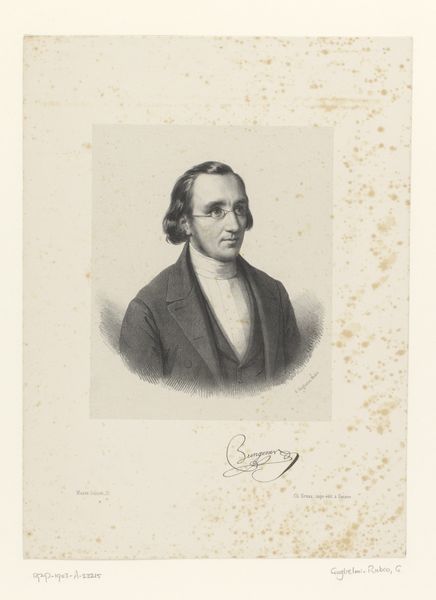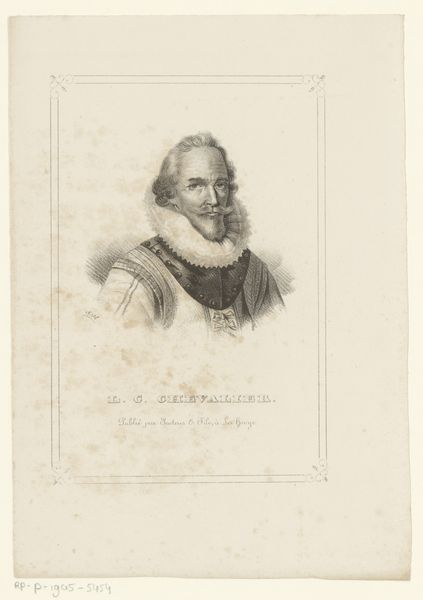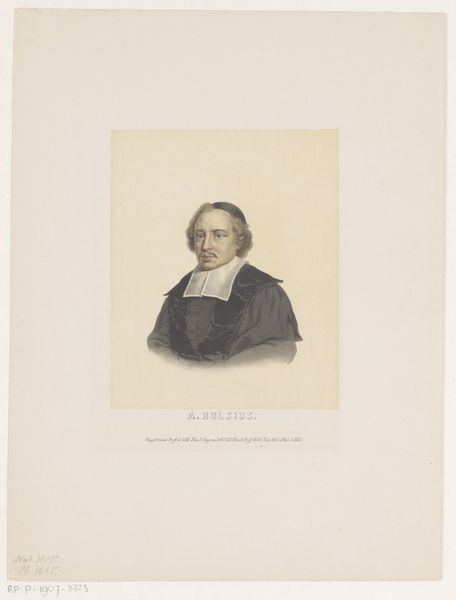
drawing, pencil
#
portrait
#
drawing
#
light pencil work
#
pencil sketch
#
caricature
#
pencil drawing
#
romanticism
#
pencil
#
portrait drawing
Dimensions: height 440 mm, width 298 mm
Copyright: Rijks Museum: Open Domain
Editor: This is a portrait of Esprit Fléchier, created with pencil in 1825 by Henri Grevedon. It strikes me how the light pencil work seems to capture a real sense of the subject’s presence, despite the simplicity of the medium. What stands out to you? Curator: The portrait’s success lies significantly in the calculated distribution of tonal values. Observe how Grevedon articulates form primarily through subtle gradations of shading. The texture of the paper support also contributes actively; the tooth of the surface disrupts the graphite, causing visual interest and nuance, most visible along the sitter's jawline and hair. Note the balance and asymmetry achieved with soft tonal shifts throughout. Editor: So, the materials themselves play a key role? Curator: Precisely. The conscious application of graphite creates an interplay between smooth and broken lines. This is particularly effective in delineating the delicate curls and the sitter’s facial features. Notice also how the limited tonal range accentuates form, establishing a strong light source on his face, then gradually falling into darkness along the sides. This compositional approach reinforces the subject’s character, and highlights certain textures, like fabric or skin. Editor: That’s fascinating. I was focusing more on the face, but now I see the balance you are referring to. Curator: Yes, by emphasizing the structural elements of the portrait, such as line, tone, and the inherent texture of the materials, we appreciate how form embodies expression. Editor: It’s really insightful to consider how much the materials themselves contribute to the overall effect. I’ll definitely look at drawings differently now.
Comments
No comments
Be the first to comment and join the conversation on the ultimate creative platform.
